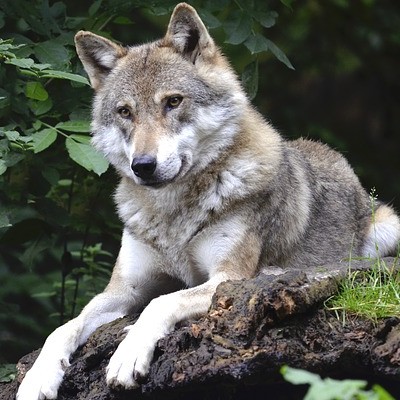Grey European Wolf – Canis lupus
Name: Canis lupus – grey european wolf
Appearance: It reminds of a bigger dog. The colour of fur depends on the habitat. The wolves of the Dinarides usually have dark grey fur on the back and on the tail, which turns to light grey towards the abdomen and legs. Their body is adapted to running and long-term trot. Rib cage is narrow, elbows tucked in, and paws facing outwards. There are four toes on the back legs, and five on the front ones. Jaws are strong with strong and sharp teeth.
Body length: from the tip of the nose to the tip of the tail about 170 cm (tail 42 cm)
Body height at the withers: about 70 cm
Body weight: 30-50 kg
Nutrition: carnivore
Mating season: monogamous (dominant male and female)
Number of cubs: 3-7
Dinaric-Balkan’s grey european wolf population, that includes areas from Slovenia to northern Greece, including Croatia, Bosnia and Herzegovina, Serbia, Montenegro, Macedonia, Albania and Bulgaria, are estimated between 3 900 – 5 000 individuals.
It can live on the most various types of habitat because it primarily depends on the availability of prey and harassment by humans. It usually lives in forest but that is a consequence of the fact that man has pushed it out of the open areas.
Grey wolf is a sociable animal that lives in a pack. The pack is a family community: its core is comprised of a parental couple while the rest of the pack are their descendants. It is usually the dominant couple (alpha male and alpha female) in the pack that breed. They bond for life. There is a clear hierarchy in the pack – the parental couple is dominant while other members build mutual relations of superiority and subordination. If there is not enough food in the habitat, the subordinate wolves will begin leaving the pack (dispersion), which is one of the internal mechanisms of regulating the pack size. Wolves are in the pack throughout the year – jointly hunting, raising cubs and defending their territory. The pack size depends on the quantity and size of the available prey. Wolves are very territorial animals given that it is where they provide their prey. Since the territories are dynamic (they depend on the food quantity, mortality of cubs and pack size), spatial relocations are frequent. Territory borders of several packs can temporarily overlap on their margins, which means they can be used by different packs but in different parts of the year. The use of habitat varies over the year and depends on the availability of food, reproductive activity and harassment. In the spring and summer, the pack stays close to the den and gathering place. In the autumn, when cubs become more movable, the movement on the territory becomes more even. Wolves actively mark their territory by urine, faeces, scratching the ground and howling.
In the Dinarides, the greatest threat to grey wolf represent: fragmentation, habitat loss, decreasing population of the game’s species (doe, deer, etc.), as well as human-carnivore conflict.

